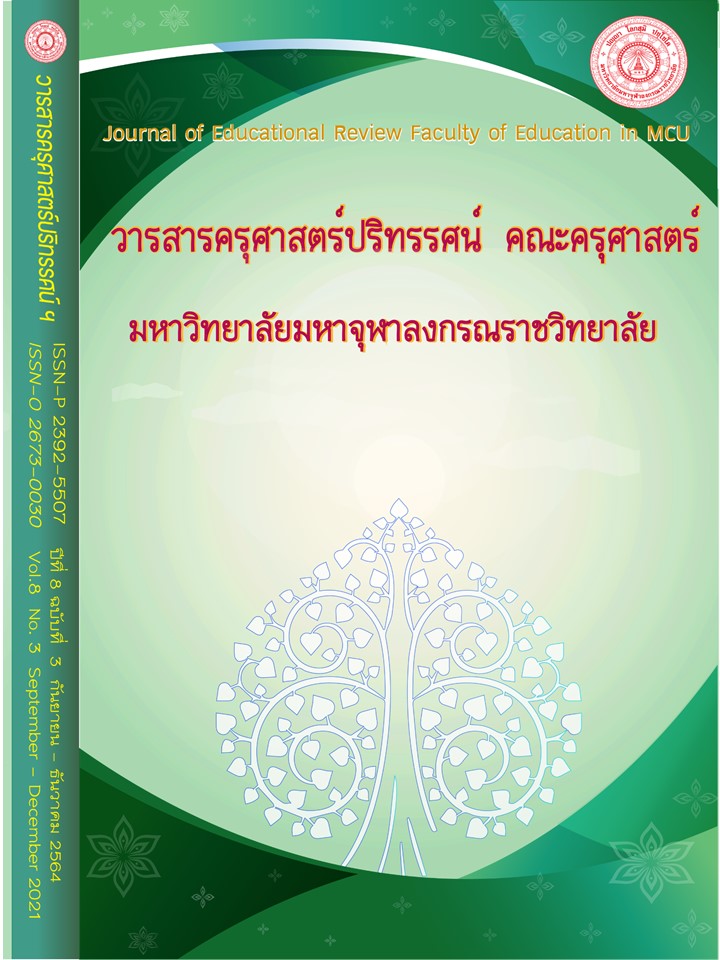ROBOT CLUSTER DEVELOPMENT POLICY IMPLEMENTATION
Main Article Content
Abstract
The purpose of this research was to 1) to study the robot cluster development policy implementation and 2) to study problems and obstacles to robot cluster development policy implement. This research was a qualitative research. This was a method that could gain insights into weight. reliability from key informants who had chosen a purposive selection from knowledgeable people. expertise, experience and strong relevance in the robotics industry, including senior government executives, middle-level government executives, entrepreneurship association, executive level of the private sector, government academics, scholars in the government and private sectors, totaling 19 key informants. The results found that: 1) Thailand industrial needs aimed to develop and promote robot clusters. It aimed that B.E.2026 will be the leading exporter of robots and automation in the ASEAN region. Robot development according to industrial needs to encourage robotics and automation operators to develop products that were responsive to the agricultural service, pharmaceutical, beverage, food processing, logistics, automotive and electrical and electronic sectors. Promotion and development of the potential of Thai people in the production of robots. Integrating cooperation between various institutions to develop skills and academics promoting and driving teaching and learning curriculum, creating and developing competent teachers to produce personnel to drive in the robot industry. Enhancing the capability of the country to produce Thai robots with human resource development, dissemination of knowledge in robotics and automation technology, establishment of a specific agency, establishing network partners, promoting investment in various industrial sectors. Mutual investment measures between manufacturers, government and financial institutions by the user side had tax investment measures for business that adopt automation and robots to improve production efficiency. The manufacturers had exempted tariffs on robotic parts and automation. Government funding and domestic financial institutions providing benefits to businesses that used robots and automation and was a category that the BOI promotes and free funds. Tax measures by providing tax incentives user tax measures include income tax deductions, corporate income tax exemption. And tax measures for manufacturers included the corporate income tax exemptions. 2) Problems and obstacles were problems of lack of cooperation between various sectors. Thai manufacturing sectors were not concerned with the introduction of automation and robots, lack of knowledgeable, competent and skilled personnel, unable to develop on their own systems, technology, robots and automation of high complexity.
Article Details
ทัศนะและความคิดเห็นที่ปรากฏในบทความในวารสารฉบับนี้ถือเป็นความรับผิดชอบของผู้เขียนบทความนั้นเพียงผู้เดียว และไม่ถือเป็นทัศนะและความรับผิดชอบของกองบรรณาธิการ
กองบรรณาธิการขอสงวนสิทธิ์ในการคัดเลือกบทความลงตีพิมพ์และจะแจ้งให้เจ้าของบทความทราบหลังจากผู้ประเมินบทความตรวจอ่านบทความแล้ว
ต้นฉบับที่ได้รับการตีพิมพ์ในวารสารครุศาสตร์ปริทรรศน์ คณะครุศาสตร์ มหาวิทยาลัยมหาจุฬาลงกรณราชวิทยาลัย ถือเป็นกรรมสิทธิ์ของคณะครุศาสตร์ มหาวิทยาลัยมหาจุฬาลงกรณราชวิทยาลัย ห้ามนำข้อความทั้งหมดหรือบางส่วนไปพิมพ์ซ้ำ เว้นเสียแต่ว่าจะได้รับอนุญาตจากมหาวิทยาลัยฯ เป็นลายลักษณ์อักษร
References
กิตติพงษ์ พุ่มโภชนา. (2561). การศึกษาและพัฒนาแขนกลอุตสาหกรรมแบบจับ-วาง ชนิด 3 แกน ที่ควบคุมตำแหน่งการเคลื่อนที่ได้แบบป้อนกลับด้วยสัญญาณอนาล็อก ที่ควบคุมการทำงานด้วย พีแอลซี ที่ใช้ในงานการผลิตแบบอัตโนมัติเพื่อตอบรับการเข้าสู่อุตสาหกรรม 4.0. รายงานการวิจัย. มหาวิทยาลัยเทคโนโลยีราชมงคลรัตนโกสินทร์.
จิรศักดิ์ เยาว์วัชสกุล. (2561). ความพร้อมในการนำระบบการผลิตแบบอัตโนมัติมาใช้เพื่อเสริมสร้างขีดความสามารถในการผลิตชิ้นส่วนยานยนต์ในประเทศไทย. แหล่งที่มา http://journalgrad.ssru.ac.th/index.php/8thconference/article/view/1257 สืบค้นเมื่อ 22 ม.ค. 2562.
จุฑาทิพ คล้ายทับทิม. (2559). นโยบายคลัสเตอร์ของรัฐบาลพลเอกประยุทธ์ จันทร์โอชา กับโอกาสของประเทศไทยในประชาคมเศรษฐกิจอาเซียน. วารสารการเมืองการปกครองธรรมาภิบาล. 6(2). 220.
ฎาฎะณี วุฒิภดาดร และคณะ. (2557). ผลของการให้สิทธิประโยชน์ทางภาษีต่อการส่งเสริมการลงทุนในประเทศไทย. รายงานการวิจัย. กรมสรรพากร.
ภานุวัฒน์ ตริยางกูรศรี. (2559). แนวทางการปฏิรูปอุตสาหกรรมด้วยเทคโนโลยีและนวัตกรรมผ่านกลไกสนับสนุนจากหน่วยงานภาครัฐ. วิทยาลัยป้องกันราชอาณาจักร สถาบันวิชาการป้องกันประเทศ.
สุรเดช จองวรรณศิริ. (2559). ปัจจัยที่มีอิทธิพลต่อความตั้งใจลงทุนในหลักทรัพย์ของนักลงทุนบุคคล. ดุษฎีนิพนธ์การจัดการดุษฎีบัณฑิต. มหาวิทยาลัยศรีปทุม.
อรนุช ก่อเกื้อสืบสาย. (2560). การศึกษาปัจจัยและผลกระทบของนโยบายอุตสาหกรรม 4.0 ที่มีต่ออุตสาหกรรมอิเล็กทรอนิกส์ของไทย. วิทยานิพนธ์วิศวกรรมศาสตรมหาบัณฑิต. มหาวิทยาลัยศิลปากร.
Biman, D. (2001). Physics: An Introduction (Other Edition). New York: Addison Wesley.
Daniel, J. I. (2009). Engineering Vibration. 3rd ed. Ohio: The Ohio State University.
John, K. (1733). Inventor of the Flying Shuttle. New Opportunities Fund. New Jersey: Prentice-Hall.
Kernaghan, K. (2014). The Responsible Public Servant. 2nd ed. Canada: Institute of Public Administration of Canada.
Modern Manufacturing. (2558). Thailand 4.0’ กับความหวังปั้นคลัสเตอร์หุ่นยนต์ไทย…ฝันเฟื่องหรือเรื่องจริง. แหล่งที่มา https://www.mmthailand.com/thailand-4-0คลัสเตอร์หุ่นยนต์/สืบค้นเมื่อ 22 ม.ค. 2562.
Taylor, F. W. (1886). The Relative Value of Water Gas and Gas from the Siemens Producer for Melting in the Open-Hearth Furnace. Transaction American Society of Mechanical Engineering. VII. 669 (B).


